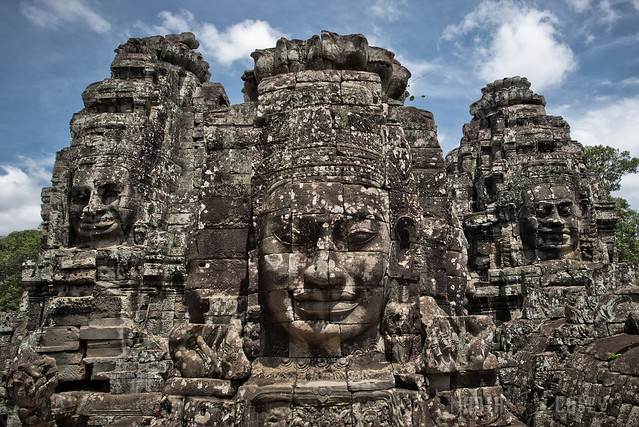
Most of you know that Thailand was one of our summer destinations. While we were there we took some time to go to Cambodia to see the 7th Wonder of the World.... Angkor Wat. Angkor Wat is all part of the "Angkor Archaeological Park" that is situated all around the town of Siem Reap, Cambodia. One word.... FANTASTIC. There is so much history and so much symbolism... we are relying on some internet research to fill you in on just a fraction of it in the description of our photos.
Angkor Archaeological Park, located in northern Cambodia, is one of the most important archaeological sites in Southeast Asia and reflects themes from both the Hindu and Buddhist religions.
- Bayon Temple - Angkor Wat, Cambodia -
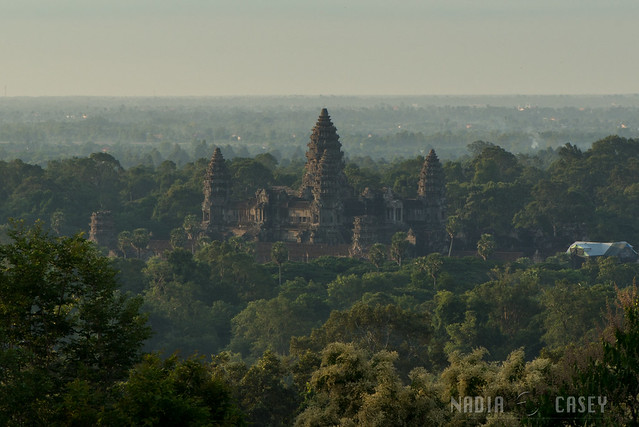
Ancient Temple
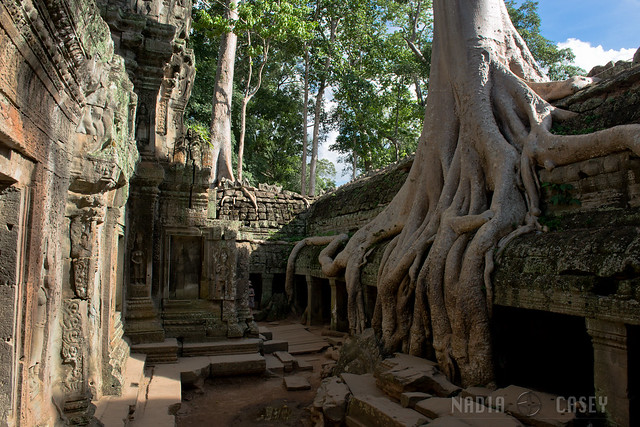
Temple Roots
A banyan is a fig that starts its life as a plant growing on another plant when its seeds germinate in the cracks and crevices on a host tree (or on structures like buildings and bridges). In Hinduism, the leaf of the banyan tree is said to be the resting place for the god Krishna.
Ta Prohm in the Angkor Wat temple complex is well known for the giant banyans that grow up, around and through its walls.
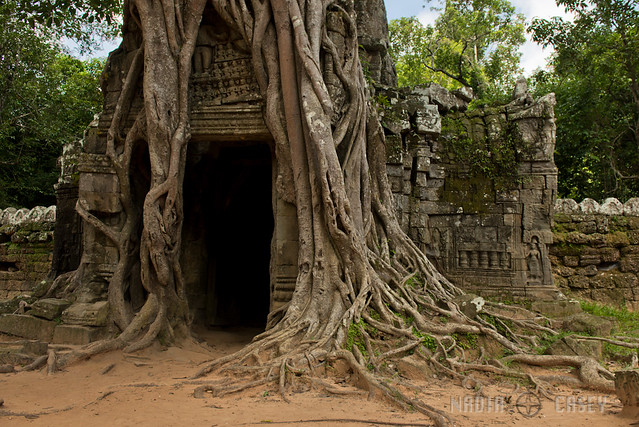
Door In The Tree
Ta Prohm, left predominantly in much the same condition in which it was found in dense jungle. Ta Prohm was constructed during the 12th and 13th century by king Jayavarman VII and served as a monastery and university during the mighty Khmer Empire, but was abandoned soon after the Khmer Empire fell. It is said that on the peak of the Khmer Empire, more than 12,500 people lived in Ta Prohm and more than 80.000 people lived outside the city walls.
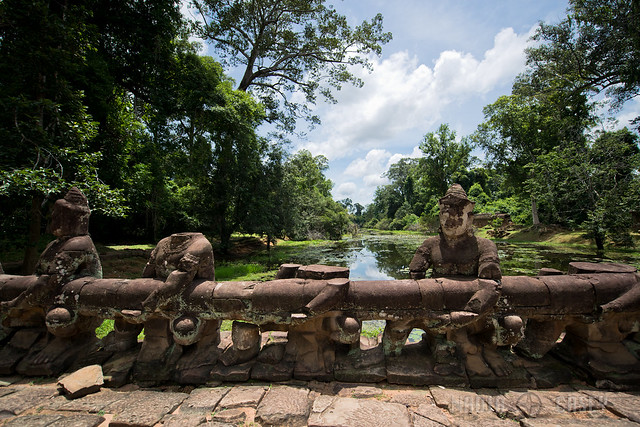
Holding the Line
There are four entrances into Angkor Wat. The western entrance (Ta Reach) was built with five doorways. These five doorways are the main entrance of Angkor Wat. To cross the moat at the main entrance, there is a stone causeway which is symbolic of making a connection from one world to another. The moat surrounding the temple is symbolic of the ocean, and the enclosing soil (Laterite) wall is symbolic of the mountains range at the edge of the universe, and represents protection for Mt. Meru. (A mythical mountain to serve as a home for the Hindu Gods, located in the center of the universe.
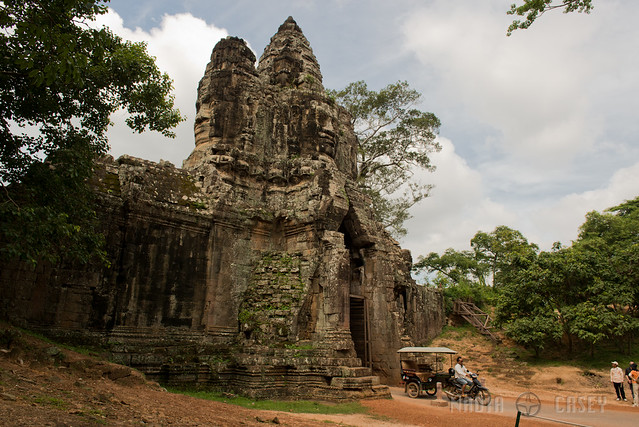
A Ride to the Gate
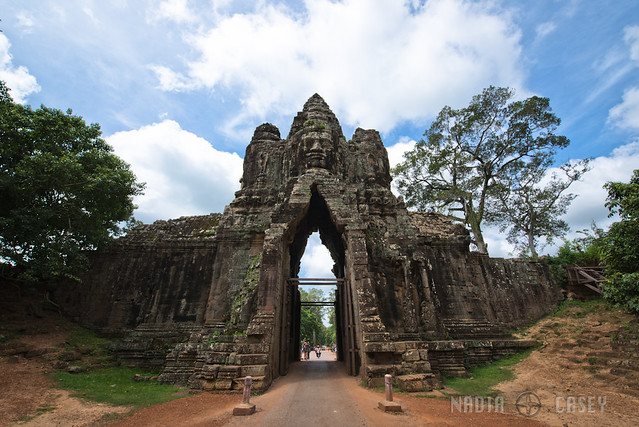
Temple Gate
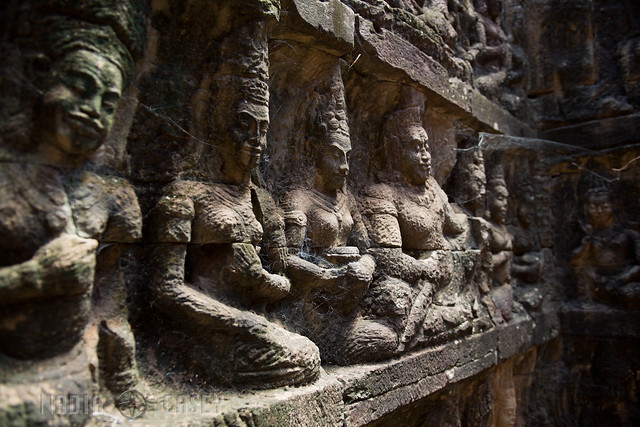
Angkor Thom Wall Statues
The ancient temples of Angkor Wat exist as the remaining relics of a historically rich city. The temples of Angkor Wat use architectural features to represent various ideas of Hindu Cosmology to represent the recreation of the heavenly world on Earth. By recreating this, Earth and the heavenly world are entwined, therefore constructing Angkor Wat to represent religious beliefs, the Khmer people literally built heaven on Earth.
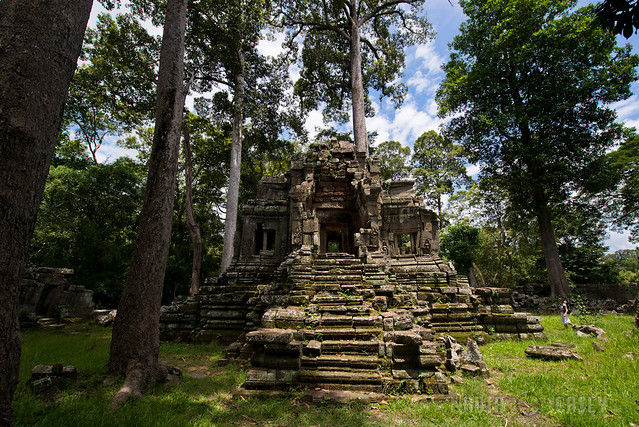
Temple in the Trees
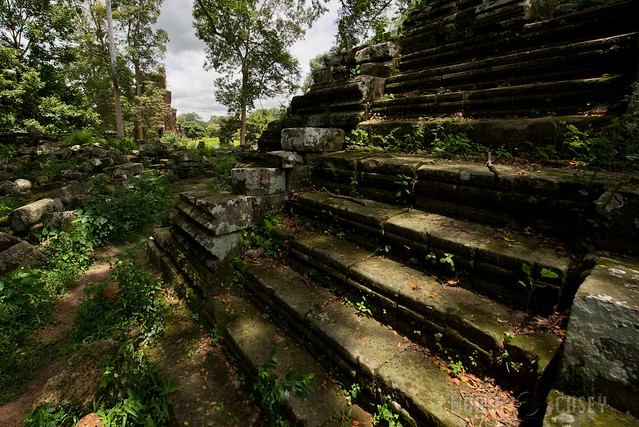
Temple Steps
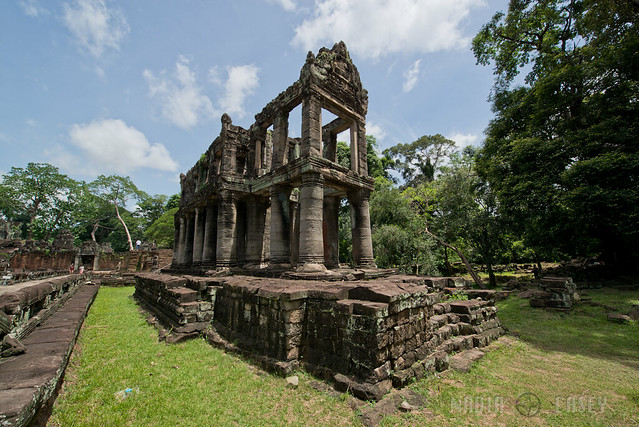
Temple Columns

Temple Alter

Looking Up
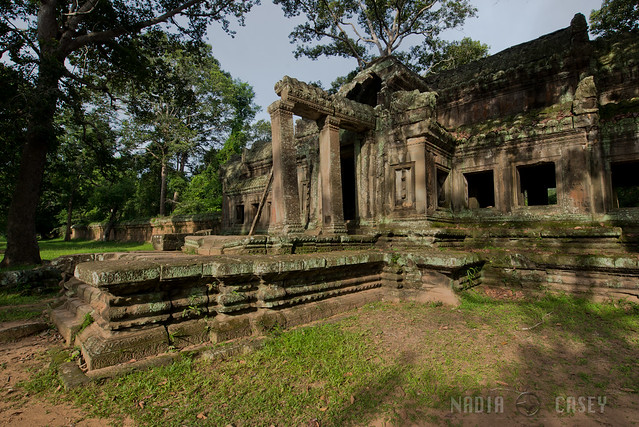
Temple Ruins
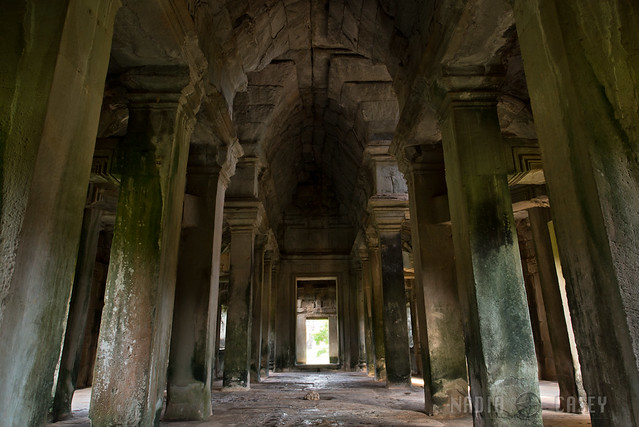
Inside A Temple
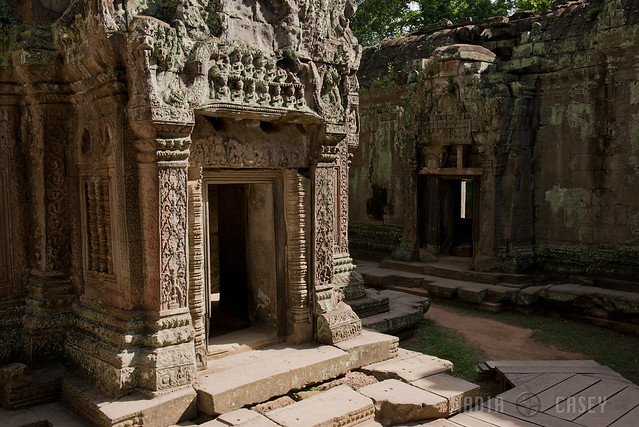
Temple Doors

Banteay Srei Reflecion
Banteay Srei is a temple dedicated to the Hindu god Shiva and is built largely of red sandstone, a medium that lends itself to the elaborate decorative wall carvings which are still observable today. The buildings themselves are miniature in scale, unusually so when measured by the standards of Angkorian construction.
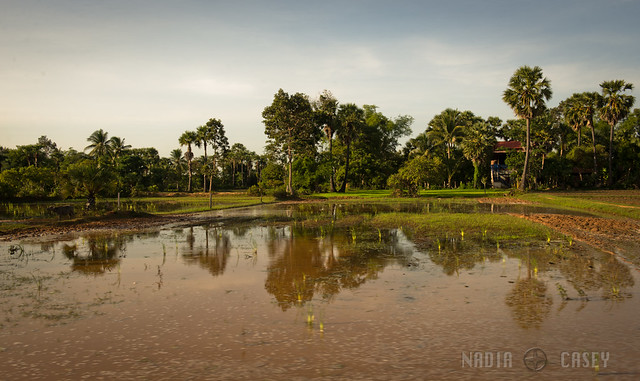
Ancient Rice Field?

Stone Statues
Monkey soldier statues are part of Hanuman's (a Hindu deity) army, guarding a (prasat) chapel at Banteay Srei Temple.

Red Temple

Bayon
The most famous and richly decorated Khmer temple of Angkor Wat is the Bayon Temple with its countless sculptural decorations. It is located at the physical center of Angkor Thom, the nine square kilometer or (three and a half square) mile city complex. Bayon was built as a Mahayana Buddhist shrine dedicated to the Buddha, and the official state temple of the Mahayana Buddhist King Jayavarman VII.

Temple Relief

Bas-Relief Apsaras
"Apsaras are figures of Hindu mythology: beautiful dancing girls who are the wives of the Ghandarvas. The Ghandarvas are the court servants of Indra, king of the demi-gods, and make the music to which their wives dance in the celestial palaces.
According to Hindu legend the “elixir of immortality” was lost in the mythological Ocean of Milk and the gods went looking for it. It is said that these goddesses were born from the ocean of milk; water nymphs that were pulled from the ocean by the Hindu Devas (gods); Visuki, the god of serpents and a group of morally corrupt demons, the Asuras.
The sultry adventures of the nymphs are recounted in the Mahabharata, in which they are described as having ultimate power over both mortal and immortal males due to their unsurpassed beauty and elegance.
These divine creatures are said to have the ability to change their forms and as the willing servants of Indra they used their seductive charms and beauty to seduce mortals, kings and wise men who may have threatened Indra’s power. The goddesses would appear to men with their torsos bare and their wrists and ankles adorned with gold."
(Holiday in Angkor Wat.com)

Crowning Tops
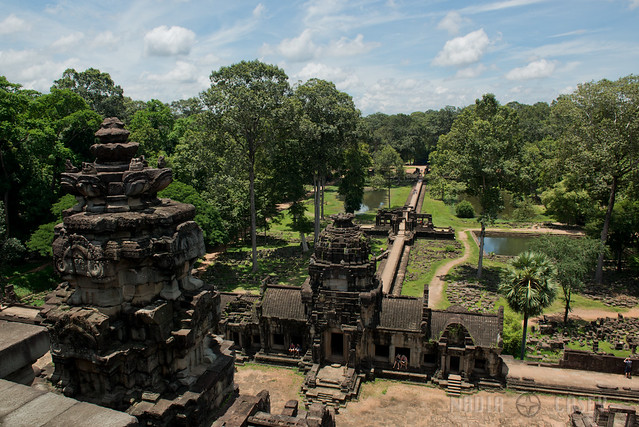
Temple View
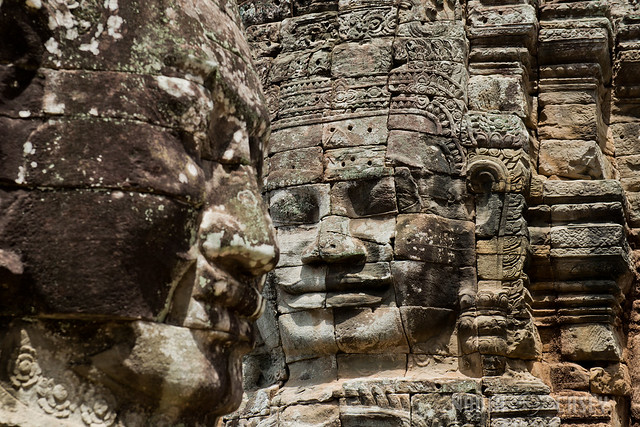
Two Faces
The upper terrace of the Bayon is home to the famous "face towers", each of which supports two, three or (most commonly) four gigantic smiling faces. The similarity of the 216 gigantic faces on the temple’s towers to other statues of the king and the meaning of the faces is still under debate by scholars.
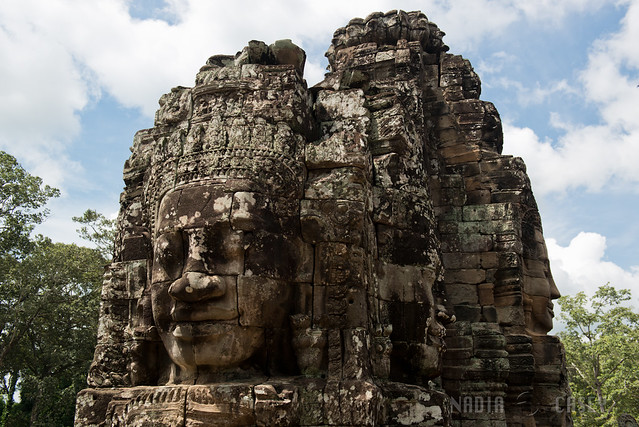
Temple Profile
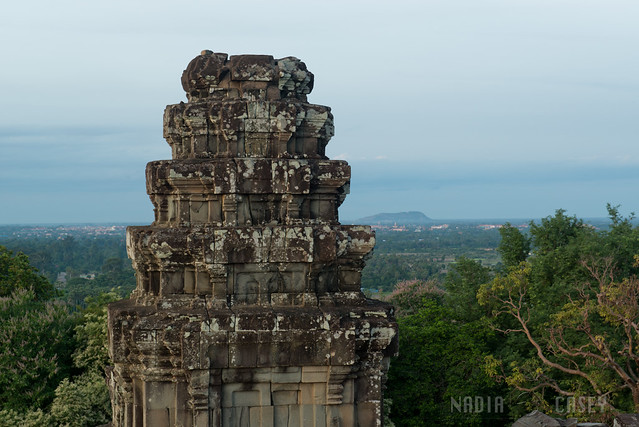
Crowning View
Angkor Archaeological Park was declared a UNESCO World Heritage site in 1992. At the same time, it was also placed on the List of World Heritage in Danger due to looting, a declining water table, and unsustainable tourism. UNESCO has now set up a wide-ranging program to safeguard this symbolic site and its surroundings.
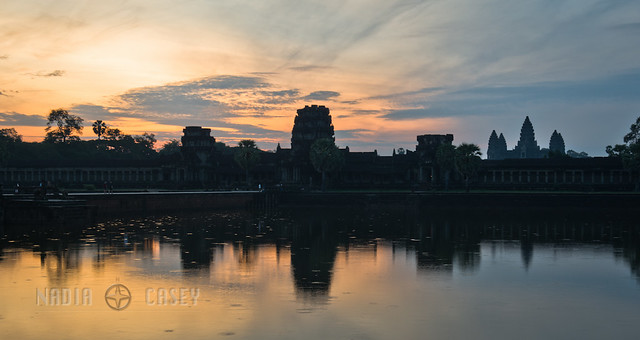
Angkor Sunrise
The foremost Hindu concept is the temple-mountain, where the temple is built as a representation of the mythical Mount Meru: this is why so many temples, including Angkor Wat itself, are surrounded by moats, built in a mountain-like pyramidal shape and topped by precisely five towers, representing the five peaks of Mount Meru.
There are several documentaries on YouTube about Angkor Wat. You can find one:
HERE

View this album on flickr
No comments:
Post a Comment